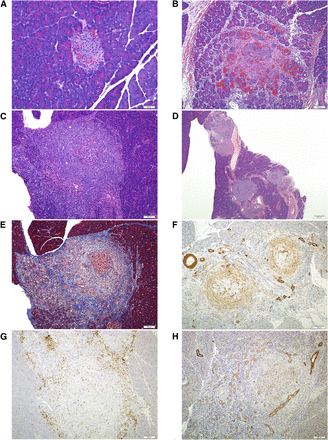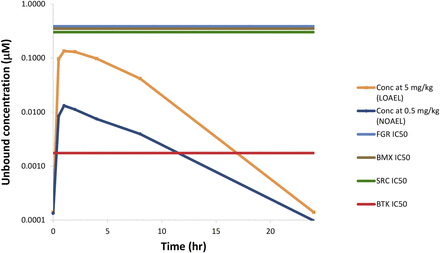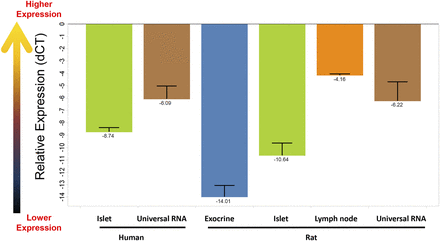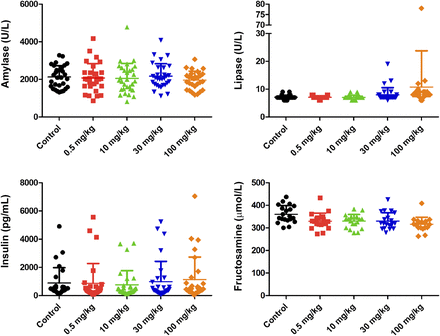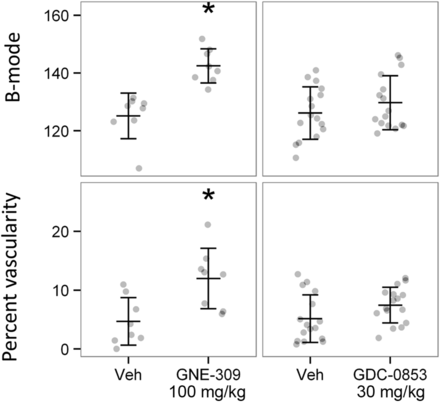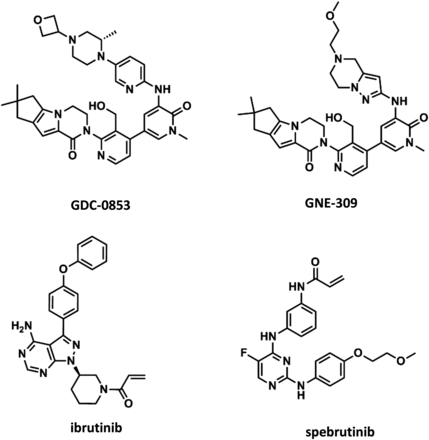This product is for research use only, not for human use. We do not sell to patients.

| Size | Price | Stock |
|---|---|---|
| 5mg | $90 | 3-6 Days |
| 10mg | $150 | 3-6 Days |
| 25mg | $250 | 3-6 Days |
| 50mg | $450 | 3-6 Days |
| 100mg | $750 | 3-6 Days |
| 250mg | $1250 | 3-6 Days |
| 500mg | $1950 | 3-6 Days |
Cat #: V4148 CAS #: 2128304-54-9 Purity ≥ 98%
Description: Fenebrutinib HCl (formerly known RG-7845; GDC-0853 hydrochloride) is an orally bioavailable, and noncovalent (reversible) bruton's tyrosine kinase (BTK) inhibitor (Ki = 0.91 nM) with anticancer and anti-inflammatory activity. It is in development for the treatment of rheumatoid arthritis and systemic lupus erythematosus. In Sprague-Dawley (SD) rats, administration of GDC-0853 and other structurally diverse BTK inhibitors for 7 days or longer caused pancreatic lesions consisting of multifocal islet-centered hemorrhage, inflammation, fibrosis, and pigment-laden macrophages with adjacent lobular exocrine acinar cell atrophy, degeneration, and inflammation. Similar findings were not observed in mice or dogs at much higher exposures. Hemorrhage in the peri-islet vasculature emerged between four and seven daily doses of GDC-0853 and was histologically similar to spontaneously occurring changes in aging SD rats. This suggests that GDC-0853 could exacerbate a background finding in younger animals. Glucose homeostasis was dysregulated following a glucose challenge; however, this occurred only after 28 days of administration and was not directly associated with onset or severity of pancreatic lesions. There were no changes in other common serum biomarkers assessing endocrine and exocrine pancreatic function. Additionally, these lesions were not readily detectable via Doppler ultrasound, computed tomography, or magnetic resonance imaging. These results indicate that pancreatic lesions in rats are likely a class effect of BTK inhibitors, which may exacerbate an islet-centered pathology that is unlikely to be relevant to humans. Bruton's tyrosine kinase (BTK) is a member of the Tec family of cytoplasmic tyrosine kinases involved in B-cell and myeloid cell signaling.
Publications Citing InvivoChem Products
Product Promise

- Physicochemical and Storage Information
- Protocol
- Related Biological Data
- Stock Solution Preparation
- Quality Control Documentation
| CAS No. | 2128304-54-9 |
|---|---|
| Storage | -20℃ for 3 years in powder form |
| -80℃ for 2 years in solvent |
This equation is commonly abbreviated as: C1 V1 = C2 V2
- (1) Please be sure that the solution is clear before the addition of next solvent. Dissolution methods like vortex, ultrasound or warming and heat may be used to aid dissolving.
- (2) Be sure to add the solvent(s) in order.





































